Today’s Current Affairs: 27th April 2024 for UPSC IAS exams, State PSC exams, SSC CGL, State SSC, RRB, Railways, Banking Exam & IBPS, etc
Table of Contents
The State Of The Climate In Asia 2023:
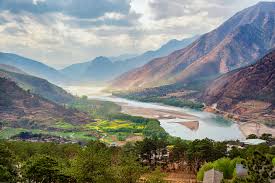
The World Meteorological Organization (WMO) has released a report titled “The State of the Climate in Asia 2023,” which sheds light on the alarming impact of climate change.
- The report highlights the severe consequences of extreme weather events, rising temperatures, and environmental changes in the Asian continent.
Key Highlights of the Report:
- Asia experienced 79 extreme weather events in 2023, affecting over nine million people.
- Over 2,000 deaths were directly attributed to these disasters.
- Floods and storms caused the highest number of casualties and economic losses in Asia in 2023.
- The report noted that Asia has warmed faster than the global average and the warming trend has nearly doubled since the 1961-1990 period.
- The accelerating rate of key climate change indicators such as surface temperatures, glacier retreat and sea level rise will have major consequences for Asia, its economy and ecosystems, the report emphasised.
Intergovernmental Negotiating Committee (INC) On Plastic Pollution:

The fourth session of the INC to develop an international legally binding instrument on plastic pollution, including in the marine environment (INC-4), opened in Canada’s capital, Ottawa.
- The resolution requested the Executive Director of the UN Environment Programme (UNEP) to convene an Intergovernmental Negotiating Committee (INC) to develop “the instrument,” which is to be based on a comprehensive approach that addresses the full life cycle of plastic, including its production, design, and disposal.
- The objective of the global plastics treaty is to set a global framework of standards around accountability, responsibilities, financing, material/chemical standards, import/export restrictions, targets.
- An INC meets five times to develop the specific content of the new ILBI by the end of 2024.
- The first session of the INC (INC-1) took place in Punta del Este, Uruguay, from 28 November to 2 December 2022, followed by a second session (INC-2) from 29 May to 2 June 2023 in Paris, France, and a third session (INC-3) from 13 to 19 November 2023 in Nairobi, Kenya.
- INC-5, scheduled for 25 November to 1 December 2024 in Busan, Republic of Korea, is intended as the end of the INC process.
Gender Gap In Indian STEM Faculties:
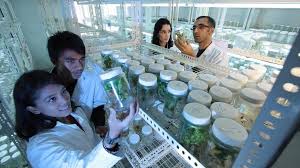
A significant gender gap exists in Indian STEM(science, technology, engineering, and math) faculties, with a BiasWatchIndia study revealing that only 13.5% of faculty members across 98 universities and institutes are women.
- This underrepresentation is more prominent in India compared to countries like the US and UK.
- Gender Gap in Indian STEM Faculties is due to :
- Social Bias Against Women in Certain STEM Fields: Fields like Biology, seen as “soft sciences,” have higher female representation compared to hard sciences like Engineering and Physics.
Societal biases discourage women from pursuing fields perceived as less feminine, affecting their choices in higher education and research. - Lack of Support During PostDoc to Faculty Transition: The critical transition from postdoc to faculty often aligns with family planning, leading to difficult choices for women.
- Societal pressure prioritising family over career ambitions and a lack of support structures exacerbate the challenge.
- Toxic Workplace Environment: Many women exit STEM academia due to a toxic work environment.
- Factors include disrespect, inadequate access to resources, and limited advancement opportunities compared to male colleagues.
- Difficulty Accessing Gender Representation Data: Absence of a central database tracking women faculty in STEM across India.
- Lack of data hinders understanding of the gender gap and monitoring progress towards gender equality.
- Social Bias Against Women in Certain STEM Fields: Fields like Biology, seen as “soft sciences,” have higher female representation compared to hard sciences like Engineering and Physics.
Inflammatory Bowel Disease (IBD):
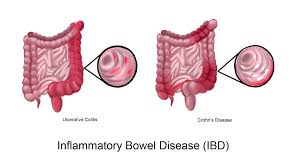
Inflammatory Bowel Disease (IBD) comprising primarily Ulcerative Colitis and Crohn’s Disease has been on the rise globally.
- Inflammatory Bowel Disease (IBD) is an umbrella term for chronic inflammatory conditions affecting the gastrointestinal (GI) tract.
- Two main forms of IBD:
- Crohn’s disease: It can affect any part of the digestive tract, from mouth to anus. Inflammation can be patchy, meaning areas of healthy tissue can be interspersed with inflamed areas. It often affects the deeper layers of the bowel wall.
- Ulcerative colitis: Limited to the inner lining (mucosa) of the large intestine (colon) and rectum. The inflammation is continuous, affecting the entire colon in severe cases.
- Causes: The exact cause of IBD remains unknown, but research suggests a complex interplay of factors like genetics, immune system and environmental factors.
- Symptoms: Abdominal pain and cramping, diarrhea, often bloody, urgent need to have a bowel movement, weight loss and fatigue.
- Treatment: There is no cure for IBD, but treatments aim to manage symptoms and induce remission. These include medications, dietary modifications and surgeries.
Fast-Charging Sodium-Ion Battery:
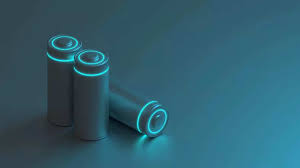
Researchers from the Korea Advanced Institute of Science and Technology (KAIST) have developed a high-energy, high-power hybrid sodium-ion battery capable of charging in seconds.
- This breakthrough could potentially revolutionize the energy storage industry and provide a viable alternative to lithium-ion batteries.
- Sodium is over 500 times more abundant than lithium, making it a cheaper and more accessible alternative
- Sodium-ion batteries have faced limitations such as lower power output, constrained storage properties, and longer charging times
- Developing next-generation sodium-ion batteries with improved performance is crucial for widespread adoption
- KAIST’s Hybrid Sodium-Ion Battery was eveloped by Professor Jeung Ku Kang and his team from KAIST’s Department of Materials Science and Engineering ,Integrates anode materials typically used in batteries with cathodes suitable for supercapacitors, Achieves high storage capacities and rapid charge-discharge rates, Overcomes slow energy storage rate of battery-type anodes and low capacity of supercapacitor-type cathodes
Green Financing:
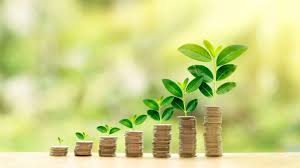
The National Bank for Agriculture and Rural Development (NABARD) unveiled its Climate Strategy 2030 document on Earth Day to address India’s growing need for green financing.
- The strategy aims to mobilize resources for climate change mitigation, adaptation, and resilience projects in the country.
- India requires approximately $170 billion annually to reach a cumulative total of over $2.5 trillion by 2030 for green financing.
- As of 2019-20, India garnered only about $49 billion in green financing, with the majority of funds earmarked for mitigation.
- A mere $5 billion was allocated towards adaptation and resilience, reflecting minimal private sector engagement due to challenges in bankability and commercial viability.
- NABARD’s Climate Strategy 2030: The strategy is structured around four key pillars:
- Accelerating green lending across sectors
- Playing a broader market-making role
- Internal green transformation of NABARD
- Strategic resource mobilization
- The initiative reinforces NABARD’s commitment to environmental stewardship and positions it as a pivotal player in India’s transition towards a resilient and sustainable economy.
India’s 1st Multipurpose Green Hydrogen Pilot Project:
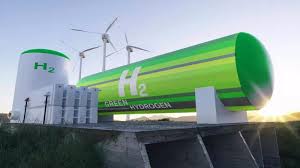
SJVN Limited inaugurates India’s 1st Multipurpose Green Hydrogen Pilot ProjectS:
- Geeta Kapur, Chairman and Managing Director(CMD) of SJVN Limited(formerly known as Satluj Jal Vidyut Nigam) inaugurated India’s 1st multipurpose(combined Heat and Power) green hydrogen pilot project at the 1,500 megawatt (MW) Nathpa Jhakri Hydro Power Station (NJHPS) in Jhakri, Himachal Pradesh(HP).
- She also inaugurated the first-of-its-kind centralised operation of 1500MW NJPHS and 412 MW Rampur Hydrogen Power Station(RHPS) by remotely operating Unit-II of RHPS from NJHPS, Jhakri.
- The project in line with the National Green Hydrogen Mission (NGHM) will accelerate the development of green hydrogen production infrastructure in the power sector.
- The state of the art green hydrogen pilot project has the capability to cater to the high-velocity oxygen fuel (HVOF) coating facility of NJHPS to meet its combustion fuel requirements.
- This will also have the capacity to generate electricity through its 25 kilowatt (kW) capacity fuel cell.
- The green hydrogen plant will utilise a alkaline electrolyzer of 20 Nm^3/Hr (normal meter cubed per hour) capacity which enables the production of hydrogen gas by splitting hydrogen and oxygen from water.
- This will use renewable energy supplied from the 1.31 MW solar power plant of SJVN located in Wadhal, Himachal Pradesh.
- The project is set to produce 14 kg of green hydrogen per day during 8 hours of operation which will be stored in 6 storage tanks.
- The green hydrogen will be utilized for HVOF coating of turbine underparts. Also, it has the capacity of generating electricity through its 25KW capacity fuel cell.
Annual Growth To Harness Demographic Dividend: RBI’s Report

According to the recent report, the Indian economy must grow at a rate of 8-10% per annum over the next decade to reap the benefits of its demographic dividend.
- The RBI emphasizes that India’s developmental strategy for the coming decades should focus on maximizing the contribution of its young and growing labor force to the growth of gross value added (GVA).
- Demographic Dividend in India:
- Working-age population expanding rapidly
- 7 million per year (2021-2031)
- 2 million per year (2031-2041)
- Opportunity for accelerated economic growth
- Requires focus on labor quality, employability, and formalization
- India’s demographic dividend started accruing from 2018 and is expected to last until 2055.
- The working-age population in India is projected to expand at a rate of about 9.7 million per year during 2021-2031 and 4.2 million per annum during 2031-2041.
NASA Human Exploration Rover Challenge 2024 Awards:

Indian students bag NASA awards for Human Exploration Rover Challenge Indian student teams from the Delhi National Capital Region (NCR) area and Mumbai (Maharashtra) have won awards from NASA‘s (National Aeronautics and Space Administration) 30th Human Exploration Rover Challenge (HERC) 2024.
- The Krishna Institute of Engineering & Technology (KIET) Group of Institutions, Delhi-NCR has won the “Crash and Burn” award;
- The Kanakia International School from Mumbai won the “Rookie of the Year” award.
- HERC 2024 competition was held at the United States of America (USA) Space & Rocket Center in Huntsville, Alabama, near NASA’s Marshall Space Flight Center.
- Winners:
- Parish Episcopal School from Dallas, USA secured 1st place in the high school division.
- University of Alabama in Huntsville, USA won the college/university category.
- The objective of HERC is to provide student teams with the opportunity to design, develop, construct, and test human-powered rovers that can navigate difficult terrain and a task tool to complete different mission.




